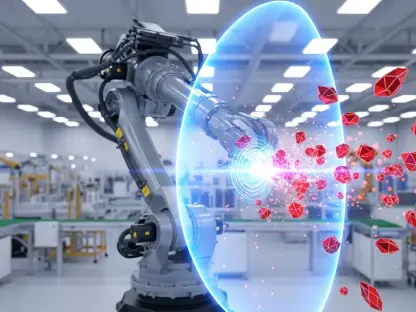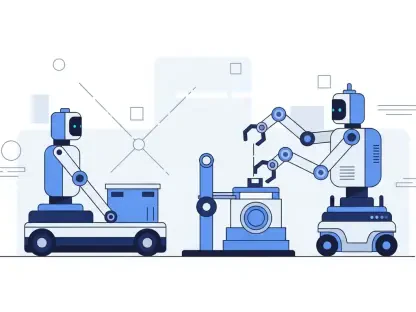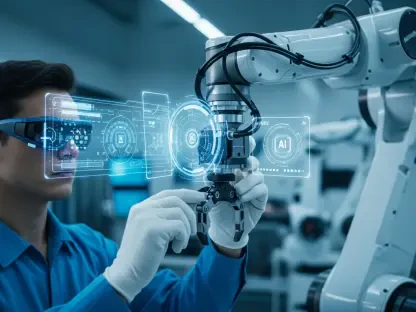Kwame Zaire is a renowned manufacturing expert and thought leader in the areas of electronics, equipment, production management, predictive maintenance, quality, and safety. His invaluable insights into these domains make him a perfect candidate to discuss General Motors’ new strategic partnership with Nvidia. The interview will cover the goals of the partnership, enhancements to GM’s ADAS systems, the Super Cruise subscription model, the impact on factory automation, and the broader implications for AI in automotive technology.
Can you explain the nature and goals of General Motors’ new partnership with Nvidia?
The partnership between General Motors and Nvidia aims to leverage Nvidia’s AI-powered chips and software to enhance GM’s advanced driver-assistance systems (ADAS) and improve factory automation. This collaboration is designed to integrate cutting-edge technology into both vehicle safety features and manufacturing processes, ultimately driving efficiency and innovation.
How will Nvidia’s AI-powered chips enhance GM’s advanced driver-assistance systems (ADAS)?
Nvidia’s AI-powered chips will provide real-time data processing and machine learning capabilities, significantly enhancing the performance of GM’s ADAS. By processing vast amounts of data from sensors and cameras, these chips will improve the accuracy and reliability of driver-assist features, leading to safer and more intuitive driving experiences.
What specific features can customers expect in the future from GM’s enhanced ADAS, including Super Cruise?
Customers can anticipate more advanced features in GM’s Super Cruise and other ADAS offerings, such as improved lane keeping, adaptive cruise control, and enhanced safety monitoring systems. These improvements will make semi-autonomous driving more responsive and capable of handling complex driving scenarios with greater ease.
Can you elaborate on the $2 billion revenue projection from the Super Cruise subscription service?
GM projects $2 billion in annual revenue from its Super Cruise subscription service within the next five years. The subscription model includes a free trial period of three years, after which customers can opt for a paid subscription at $25 per month or $250 annually. The transition to a paid model is expected to be smooth, as customers who have experienced the free service have shown a high level of satisfaction and are likely to continue with the subscription.
Why did GM decide to halt its Cruise robotaxi technology development?
GM decided to halt its Cruise robotaxi technology development due to the high costs and challenges associated with commercializing autonomous vehicles on a large scale. The technology and resources previously allocated to the Cruise program will now be integrated into enhancing GM’s self-driving capabilities in consumer vehicles. The original vision for the robotaxi program faced significant hurdles, leading to a strategic shift towards more immediate applications of AI in driver-assist features.
How will the collaboration with Nvidia influence GM’s factory automation processes?
The collaboration will significantly enhance GM’s factory automation through the creation of “digital twins” of assembly lines. This concept involves developing virtual replicas of the manufacturing process, allowing for extensive testing and production simulations. By applying AI to precision tasks like welding and material handling, GM expects to improve efficiency and reduce downtime across its manufacturing operations.
Has GM used Nvidia’s platforms for any previous AI model training or vehicle simulations?
Yes, GM has previously utilized Nvidia’s platforms for various AI model training and vehicle simulation tasks. These collaborations have yielded positive outcomes, such as improved vehicle validation processes and enhanced simulation capabilities. The new partnership aims to build on these successes, further expanding the use of AI in both product development and manufacturing.
How does GM envision the future of AI in enhancing both vehicle manufacturing and consumer-driving experiences?
GM envisions a future where AI plays a critical role in both the production and operation of vehicles. In manufacturing, AI will optimize workflows, reduce defects, and improve overall efficiency. For consumers, AI-driven enhancements in ADAS will offer safer, more enjoyable driving experiences, bridging the gap towards fully autonomous vehicles.
Can you discuss any challenges or obstacles that GM anticipates in implementing these new AI-driven technologies?
One of the primary challenges GM may face is the integration of AI technology with its existing infrastructure and processes. Ensuring data security and maintaining the reliability of AI systems under various conditions are also critical concerns. Additionally, there might be resistance to adopting new technologies within the workforce, requiring substantial training and change management efforts.
Beyond Nvidia, is GM considering any other partnerships to advance its AI and automation initiatives?
While the partnership with Nvidia is a major step forward, GM is always exploring additional collaborations to further its AI and automation goals. The company regularly assesses opportunities with tech giants and innovative startups to stay ahead in the rapidly evolving automotive landscape.
How do you think the auto industry as a whole is responding to the challenges of commercializing autonomous vehicle technology?
The auto industry is taking a pragmatic approach to the commercialization of autonomous vehicle technology. While fully autonomous vehicles are not yet widely viable, companies are focusing on incremental advancements in driver-assist systems and AI-driven safety features. There is a clear trend towards gradual enhancement of autonomy in personal vehicles rather than a singular leap to fully autonomous taxis.
Finally, what are GM’s long-term goals with AI integration in terms of both market position and technological advancements in the automotive sector?
GM’s long-term goals with AI integration include establishing itself as a leader in both vehicle safety and manufacturing efficiency. By pioneering advanced AI-driven technologies, GM aims to enhance its market position, offer superior products, and streamline production, ultimately driving growth and innovation in the automotive sector.









